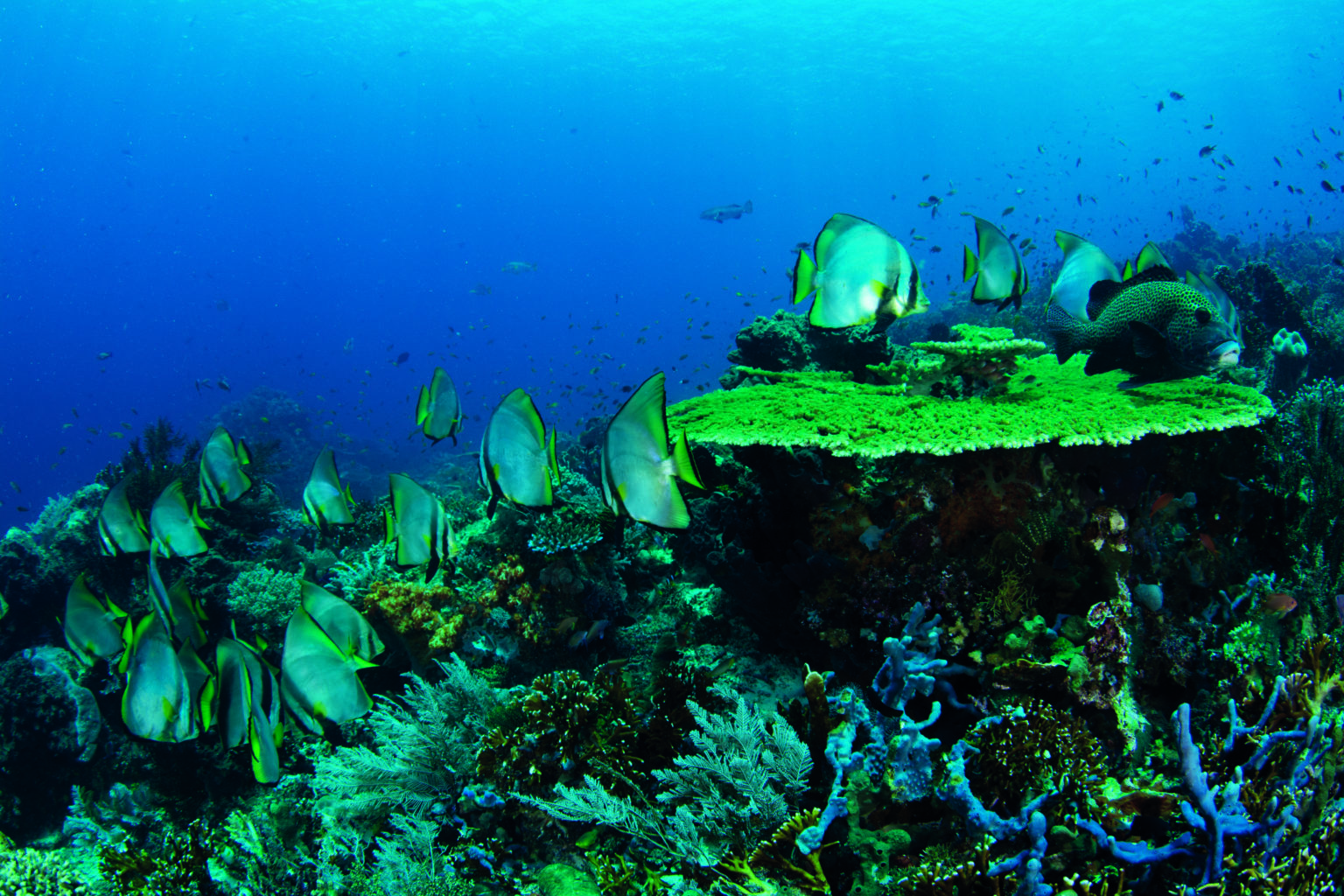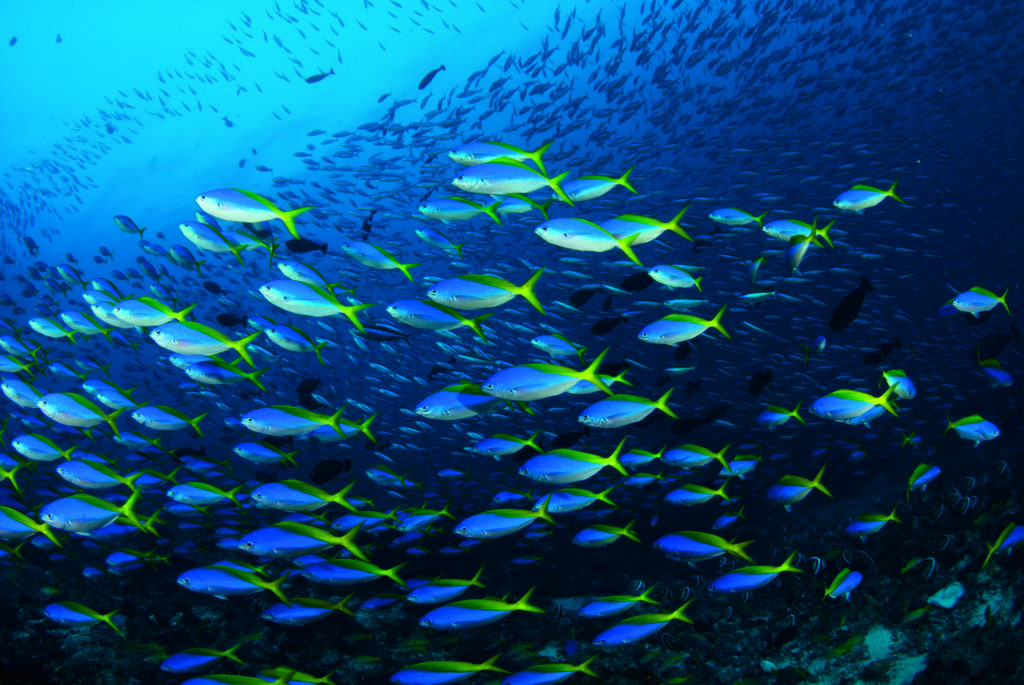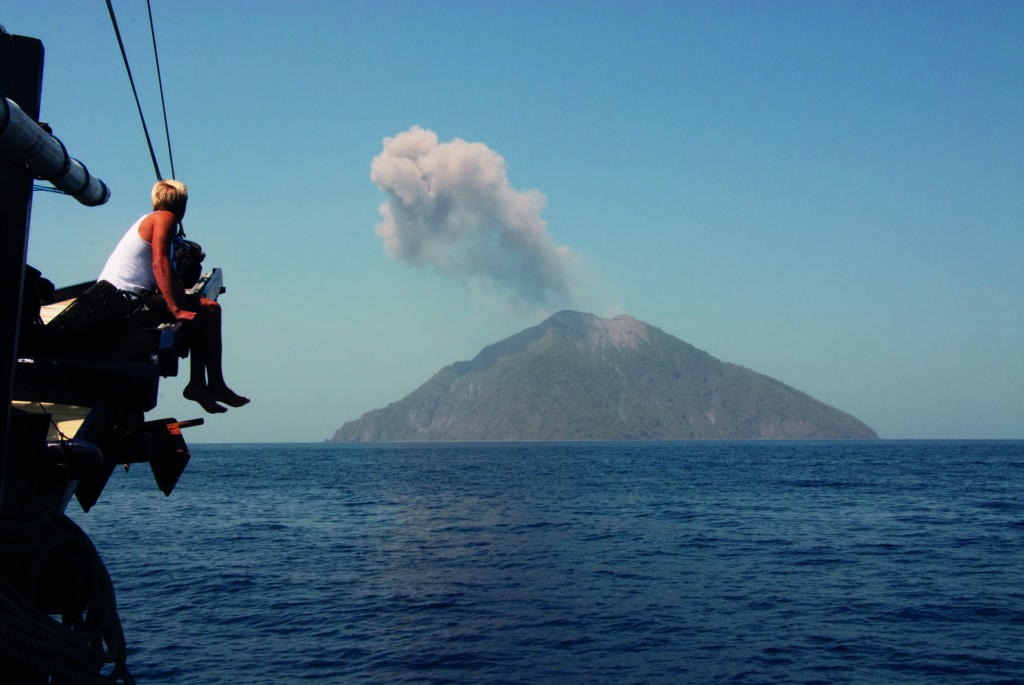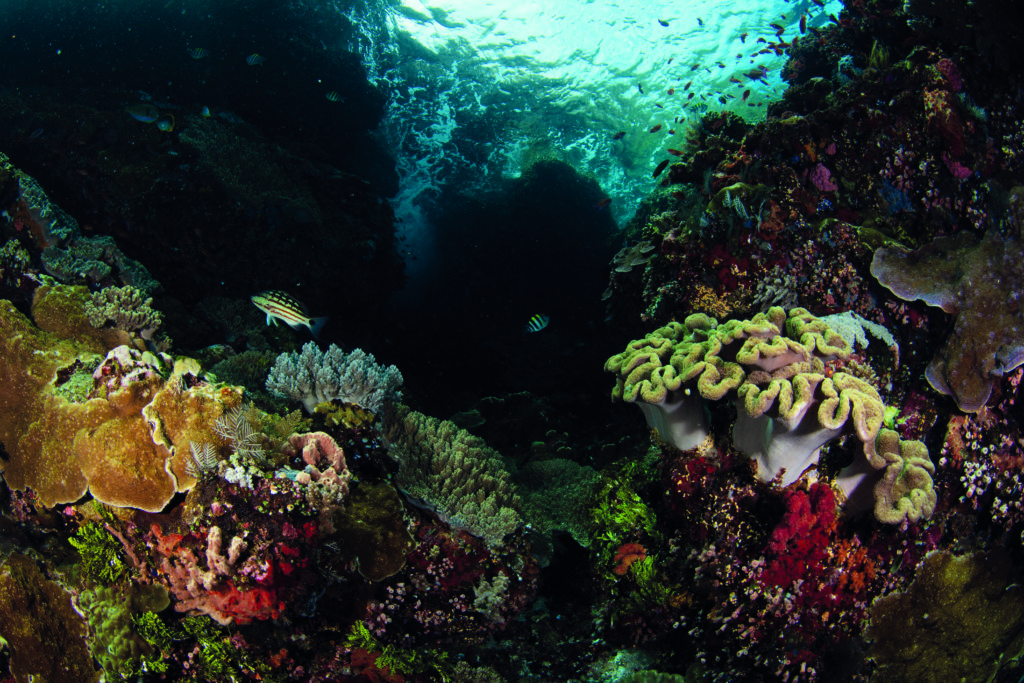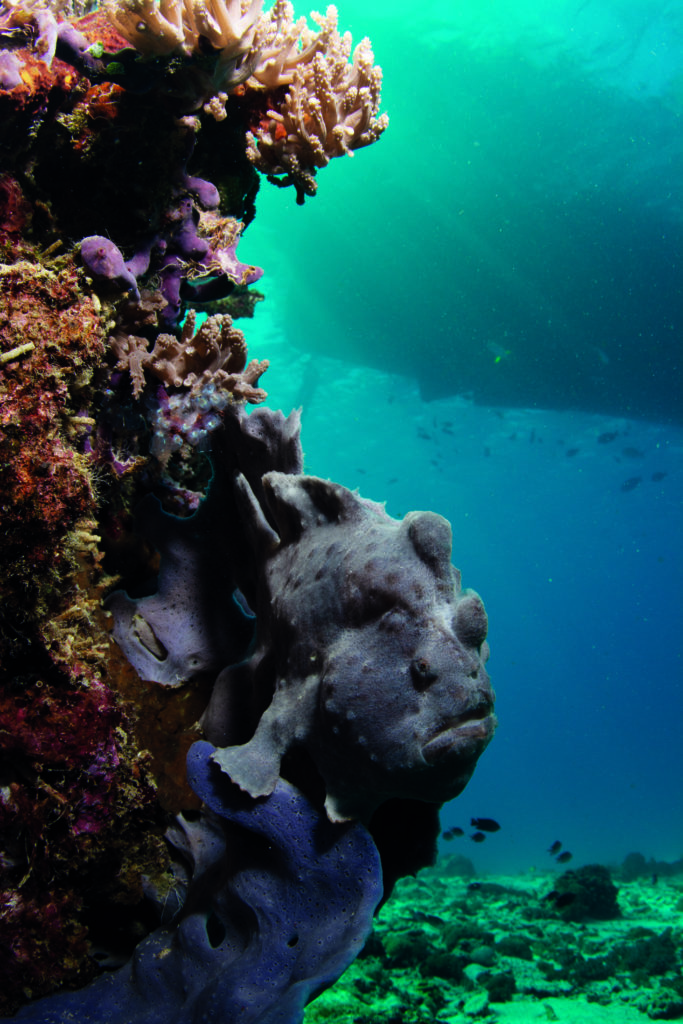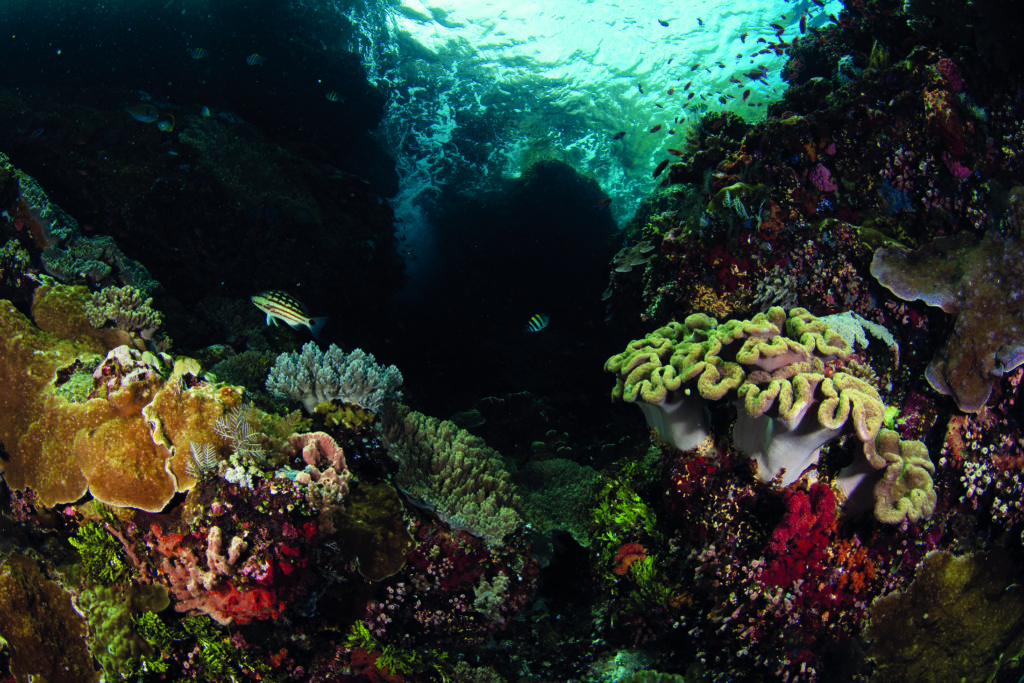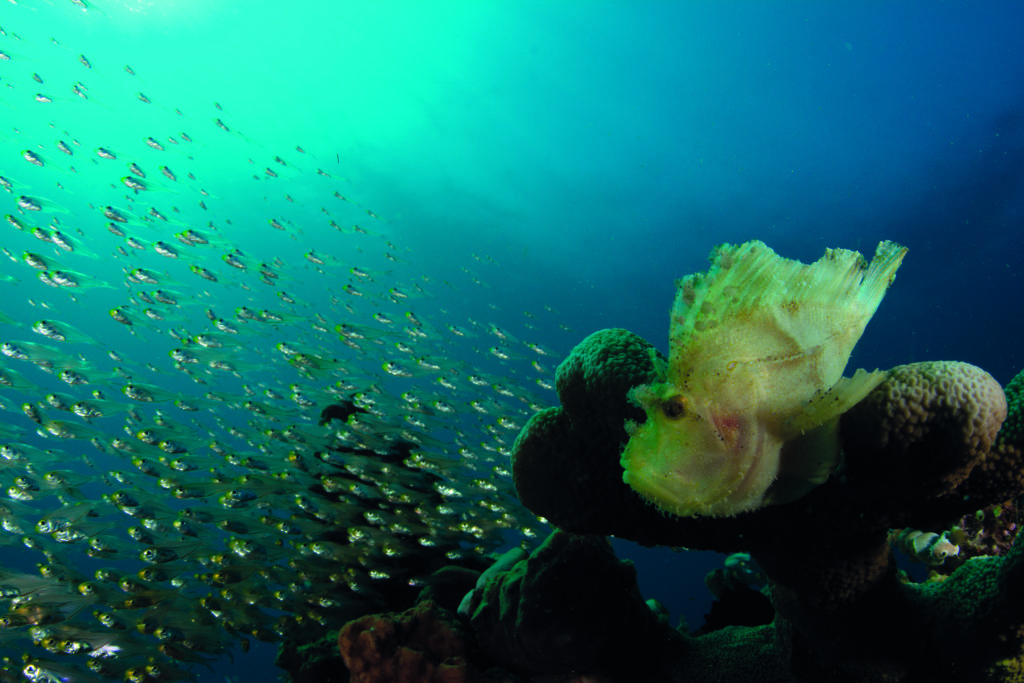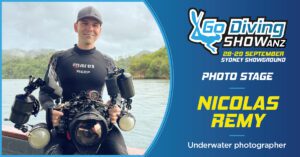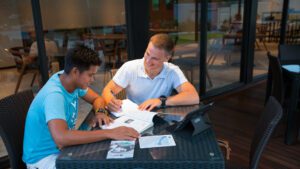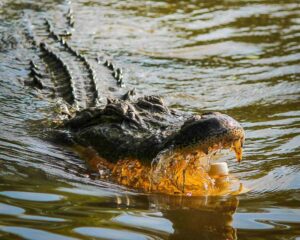Raja Ampat, Komodo, Alor, Banda Islands. No, this is not a bucket list of destinations I would like to dive over the next few years. It is, however, just some of the amazing places I visited during my 19 days on board Wicked Diving’s traditional phinisi-style liveaboard, the KLM Jaya.
Our epic 1,300-mile journey began in Komodo and finished in Raja Ampat. Along the way was an erupting volcano, an island seething with sea snakes, dragons, hammerhead sharks, manta rays, huge pods of dolphins, dramatic wall dives, spectacular reefs, beautiful deserted beaches and historical colonial towns. The expedition is broken down into three legs; the first is from Komodo to Alor.
The second section takes the Jaya across the Banda Sea from Alor to the beautiful Banda Islands. The final stage of the voyage took us from the Banda Islands to the legendary Raja Ampat. For the majority of the expedition, we were the only boat in the area, some of the sites had been visited on previous trips or by other liveaboards, while others had possibly never been dived before. It promised to be a once-in-a-lifetime trip.
First leg: Komodo to A lor
With so many places to visit and such vast distances to cover, we could only afford to spend two full days in the Komodo National Park. This is nowhere near long enough to fully appreciate this magnificent mecca of diving, so it was important to make the most of our time here. Komodo is renowned for its strong currents and a dive site called Batu Bolong is an excellent place to witness their ferocious force, especially when dived just after a full moon as we did.
The sea took on the complexion of a raging river as our dingy battled to get to the drop point through the churning, boiling, onslaught of water. Beneath us, even the giant trevallies were experiencing some difficulties. This tiny rock pokes mere metres above sea level, its barren features giving no hint of the stunning coral gardens teeming with life that lay beneath the surface.
As the falling tide hit the north side of the rock, it fanned out creating a lea side on the south – this is where we would be diving. Schools of sergeant majors inhabit the shallows and a blizzard of anthias sometimes made it hard to see the pristine hard coral gardens that cover every inch of the site. A huge school of fusiliers had also sought refuge out of the punishing current; they in turn had attracted the attention of whitetip and grey reef sharks. Giant trevallies and rainbow runners added to the melee.
The rest of the dives in Komodo were equally spectacular. Manta Point lived up to its name, with a procession of mantas cruising along the rubble-strewn reef, feeding in the plankton-rich water, hovering over sporadic coral bommies to get cleaned or forming acrobatic mating trains. Castle Rock, a large undersea mount, was covered in a seemingly endless school of yellow-masked surgeonfish.
Schooling batfish, fusiliers and yellow-lined snapper added some variety. Huge giant trevallies, schools of blue-finned trevallies and numerous whitetip reef sharks provided the adrenaline. The Cauldron, another of the area’s signature dive sites, is both unique and beautiful.
The strong currents that rage through a narrow channel between two islands have carved out a huge bowl, hence the name. Leading up to this bowl is a gentle sandy slope scattered with glassfish-covered bommies. Once in the Cauldron a brisk current pulled us across its length, past whitetip reef sharks and schooling snapper, to an area affectionately known as ‘the shotgun’.
The reef gets much shallower here and the currents pick up – after hurtling through at a rate of knots we were finally spat out into a stunning coral garden where we were joined by several feeding mantas. Finally, no visit to the area would be complete without going to see the famous Komodo dragons, the largest lizard in the world and endemic to the area.
After an exhilarating start to the voyage, the fourth day was considerably more relaxed. We spent our time cruising along the north coast of Flores; with only two dives planned, we had plenty of time to enjoy the scenery. Unlike the savanna-like landscape of Komodo, northern Flores is covered in forest and lined with beautiful sandy beaches punctuated by the occasional small village.
In the true spirit of exploration, two random places along the lush coastline were chosen for the dives; while not quite as spectacular as Komodo, the dives were very pleasant. Later that afternoon we made an impromptu visit to a small village. The hospitality was overwhelming, but this might have had something to do with the fact that this was where the ship’s cook Yunis was born, and where his parents still lived.
Our next destination was Maumere, the largest town in Flores and an important port for the area. This is not really a pretty tourist town, but there are several picturesque resorts along the coast a short distance away. There is some great muck diving along the coast, but we opted for the nearby islands of Pulau Besar and Pulau Babi for our dives.
Sheer walls covered in seafans and immense sponges fringe these two islands. One section of reef at Pulau Babi was particularly beautiful. A hole in the top of the reef created an overhang that hid a variety of seafans and soft corals, home to pygmy seahorses and frogfish. With beautiful topside scenery, a visit from a huge pod of dolphins and stunning reefs, which remain mostly unexplored, we could have easily spent a few days here.
After a great day around Maumere, we sailed overnight to the tiny island of Serbete. Here we had an early morning dive along yet another impressive wall studded with immense, elaborate sponges. Then it was time for one of, if not the, highlights of the expedition. Miles away from anywhere, sat in the middle of the sea of Flores, is Pulau Komba, a still very-active volcano. After several hours travelling across glass-flat water, a small speck appeared on the horizon.
As we drew closer a huge plume of smoke rose from the island’s summit. Twenty minutes later the volcano erupted again, as it does every 20 minutes, 24 hours a day, 365 days a year. One side of the island is covered in thick forest, the other side, where the vent of the volcano is situated, is almost completely barren.
Up close it is quite a sight, first came a huge cracking sound, then the mountain would belch out a huge pillar of smoke, large rocks would cascade down a rubble slope, sizzling and steaming as they plunged into the water below. It is not every day that you get to witness the awesome power of a volcano erupting; it is even rarer still to actually dive at its base.
With health and safety in mind we made our drop point well away from where the rocks impacted the water. The dive was stunning, huge seafans and brightly coloured soft corals clung to ridges of black rock. The topography would then change to vast plains of dark volcanic sand populated with sea pens. Then it would then morph back to the coral-covered ridges and gullies that also hid a surprising amount of marine life, including some quite-spectacular nudibranchs and various crustaceans.
Once back on the Jaya, it was suggested we take a closer look at the volcano. It is perhaps not a good idea to play chicken with a volcano, but like a bunch of naughty school kids we did it anyway! We took the dinghies as close as we dare then as the as the smoke billowed into the sky and the rocks bounced down the side of the mountain, we would quickly drive away. It felt like we were only metres from been hit, but in reality we were a good distance from danger.
The day so far had been terrific, but the best was yet to come. At night Pulau Komba is transformed from amazing to absolutely spectacular. The pitch black skies formed the perfect backdrop for a show that would put any New Year’s Eve firework display to shame. By day we witnessed large rocks bouncing down the mountain, by night we could see these bright orange, molten hot rocks explode into the sky sending showers of sparks everywhere as they hit land.
Laying on the sun deck of the Jaya with a cold beer in hand and watching a volcano explode every 20 minutes was a mesmerising experience that I will never forget. I could have stayed there all night, but with a 12-hour journey to Alor ahead of us, the captain finally decided it was time to leave, ignoring our pleas to stay for just one more explosion. In his defence, we had been saying ‘just one more’ for the past two hours…
On the seventh day of the expedition, we arrived in Alor for the first of our scheduled restock/dry days. We had travelled almost 400 miles, completed 14 dives and had some amazing experiences. The diving in Komodo was spectacular, the scenery of north Flores was beautiful, as was the diving in Maumere, and Pulau Komba was simple astounding. The next leg of the journey would take us island hopping across the Banda Sea, where there were plenty more amazing experiences in store for us, including an island teeming with sea snakes, submerged reefs and migrating whales.
The reef gets much shallower here and the currents pick up – after hurtling through at a rate of knots we were finally spat out into a stunning coral garden where we were joined by several feeding mantas
Laying on the sun deck of the Jaya with a cold beer in hand and watching a volcano explode every 20 minutes was a mesmerising experience that I will never forget
Photographs by Adrian Stacey
